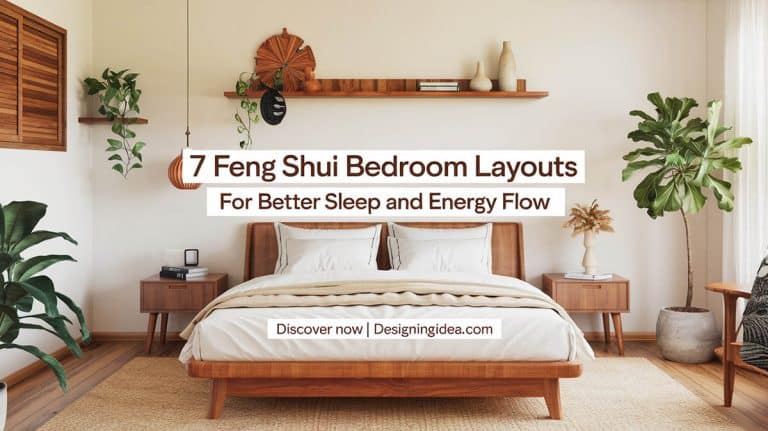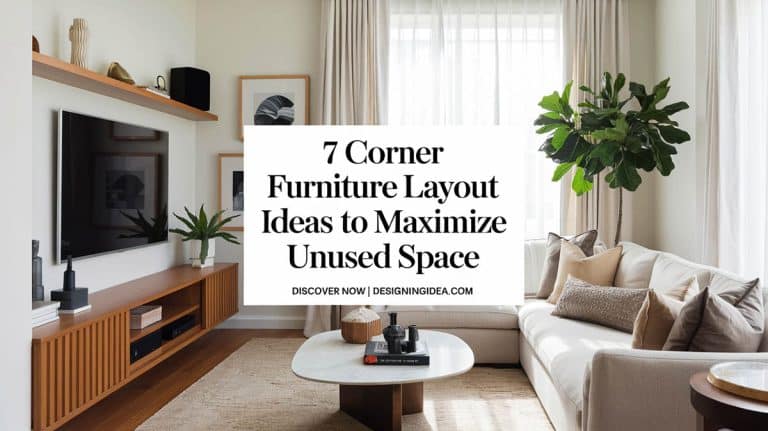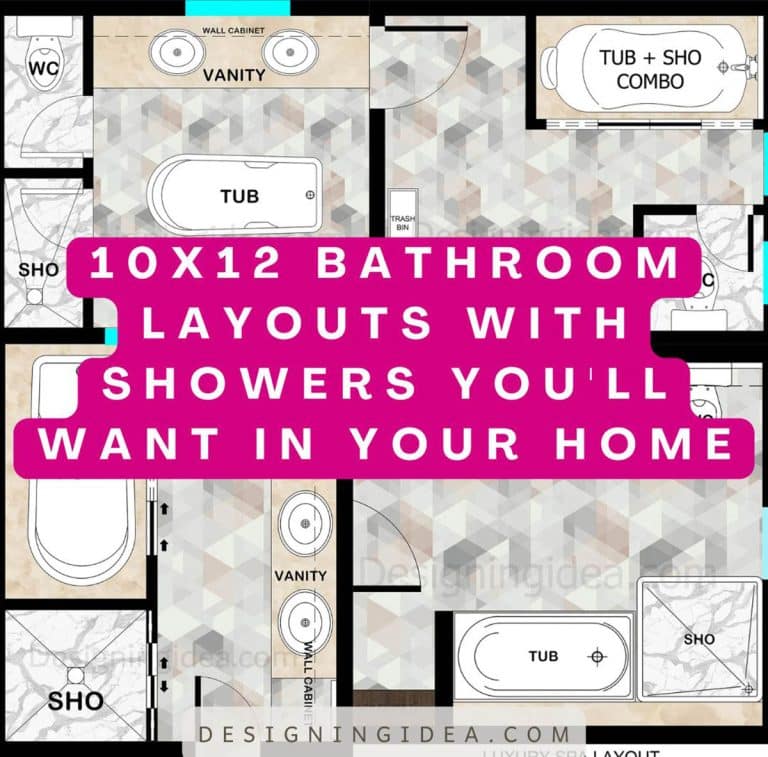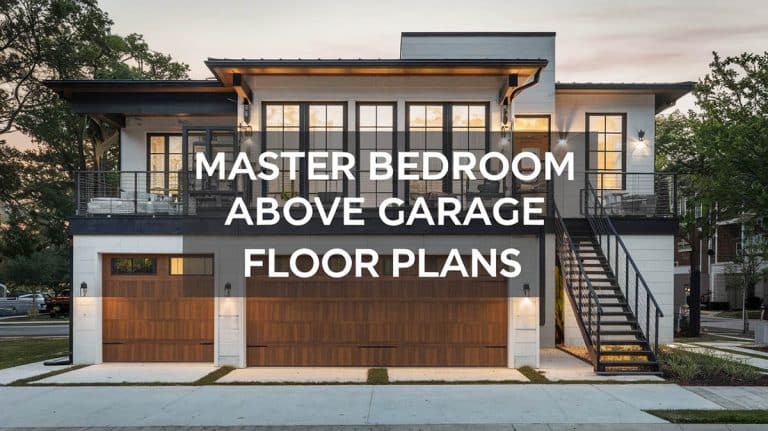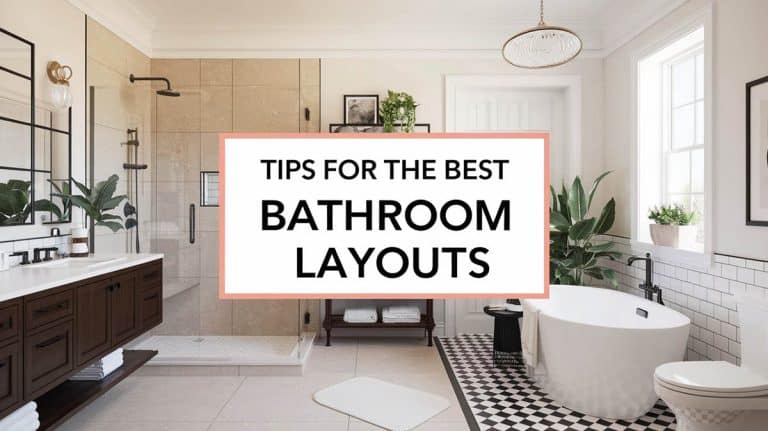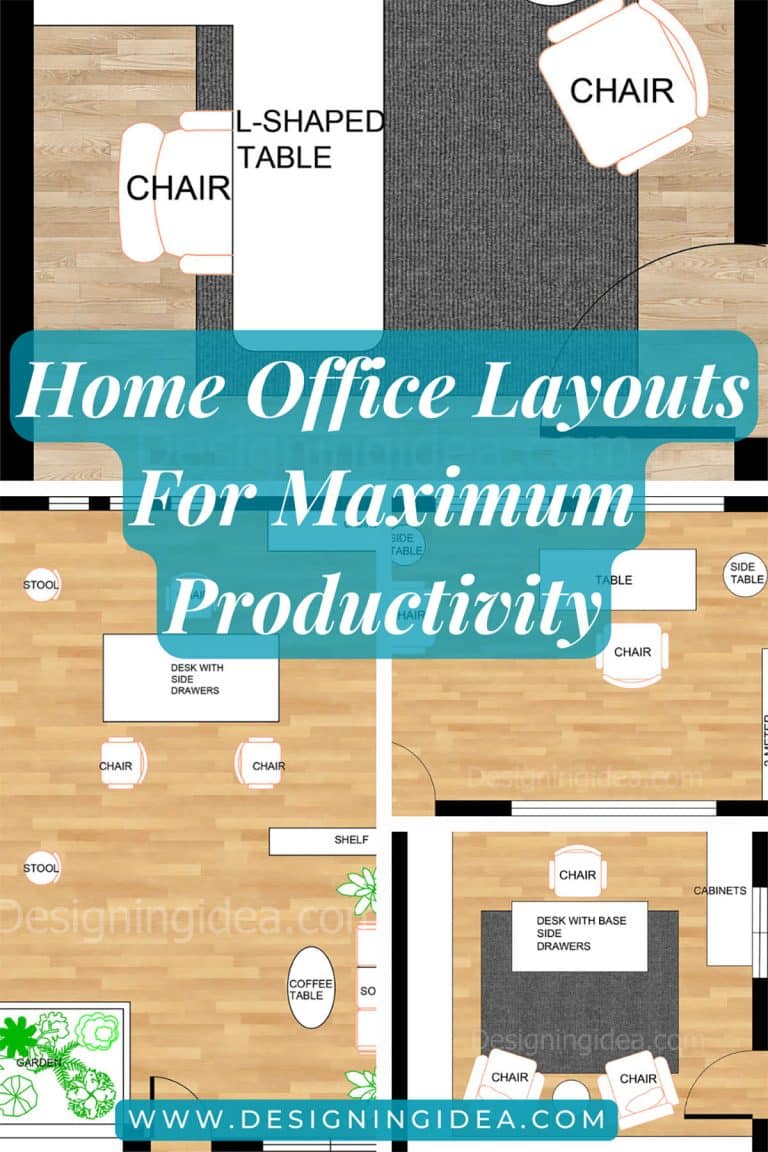10 Effective Small Home Office Layout Ideas for Maximizing Space
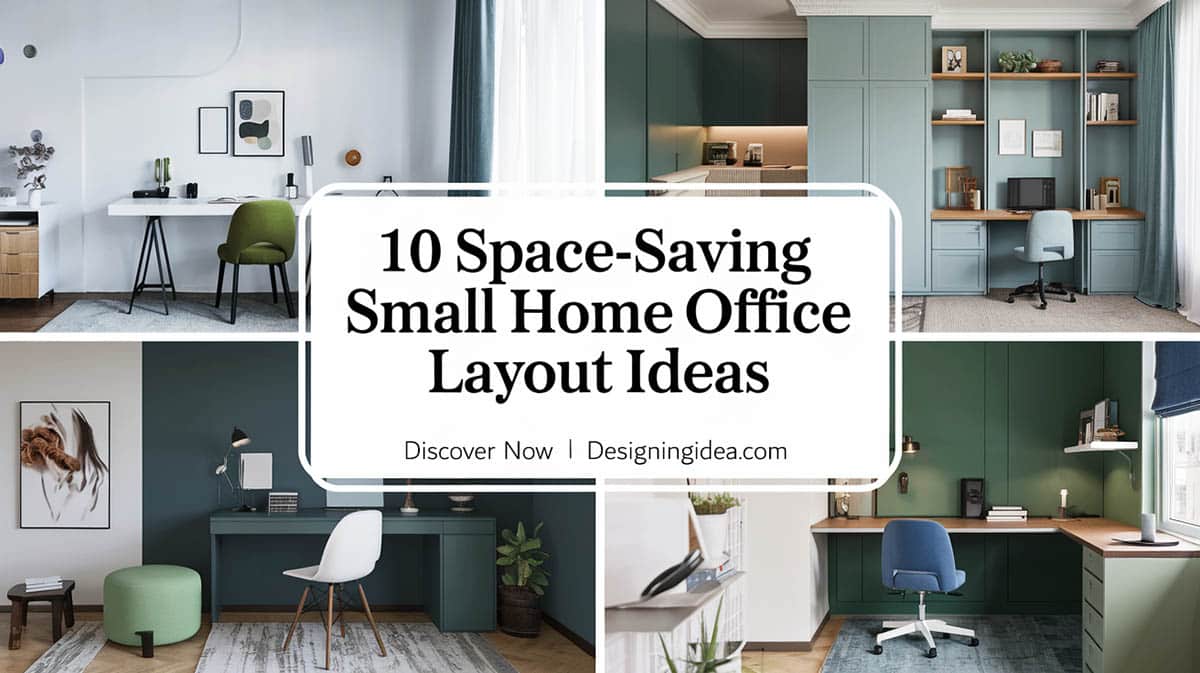
Maximizing every square foot has become essential as more professionals embrace remote work in smaller living spaces. This comprehensive guide explores innovative small home office layout solutions that transform compact areas into productive workspaces without compromising comfort or functionality.
Corner Desk Home Office Layout
A strategically positioned corner desk creates an efficient hub that radiates outward with dedicated zones for work, creativity, and relaxation – all within arm’s reach.
Looking to make the most of an unused corner in your home? Transform it into a dynamic workspace that promotes productivity and efficiency. The key is to arrange the area into smartly designed zones that support different tasks.
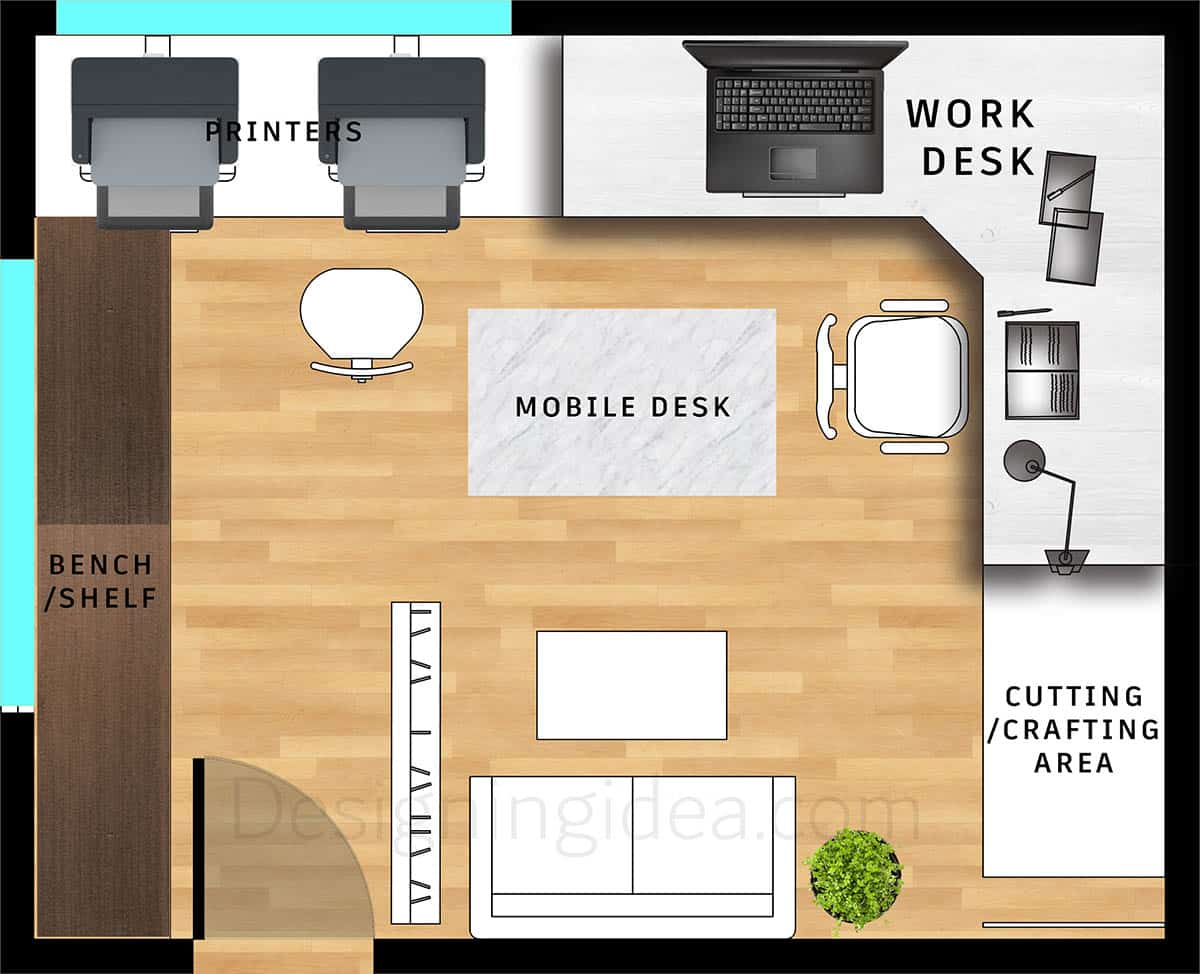
Start by anchoring the space with an L-shaped desk positioned flush in the corner. This makes full use of the unique geometry most people struggle to utilize. Place key tools and gadgets within arm’s reach so you aren’t constantly reaching across a large surface. Complete the workspace with an ergonomic chair and task lighting overhead. Next, add zones for other needs. Adjacent to the main desk, designate a space for crafting and cutting material. Along the back wall, incorporate a streamlined printer station to keep technology organized. And to one side, create a relaxed seating area for taking breaks or meeting informally.
The final touches? Mobile components allow you to reconfigure the layout as needs change. Storage solutions positioned along the walls maximize vertical real estate. And bringing in living elements like plants softens the aesthetic and connects you to nature. Most importantly, everything has a place designed to minimize effort. Frequently used items stay close at hand, while peripherals sit just out of the way. This smart workflow approach means you waste less time searching and stay focused on the task in front of you.
Primary Office Design Benefits:
- Triangle of Productivity: The corner positioning creates a natural workflow arc, placing essential items within a 120-degree radius of reach other.
- Enhanced Surface Area: The L-shaped configuration provides two desk surfaces for the footprint of one, allowing dedicated zones for different tasks (e.g., digital work versus physical paperwork).
- Natural Ergonomics: The corner setup encourages proper posture by providing support for both arms while centering monitor placement at optimal viewing angles.
- Superior Organization: The two-sided workspace naturally facilitates task separation and organization.
Wall-Mounted Desk Layout
This dual-purpose layout harnesses vertical space through a wall-mounted desk while maintaining distinct work and relaxation zones, creating an efficient yet inviting environment that doesn’t feel cramped.

A wall-mounted desk floor plan allows one to seamlessly integrate work and living spaces for maximum productivity and relaxation. Through intentional zoning and smart use of vertical real estate, it packs a ton of function into a tight footprint.
Let’s focus first on the workspace itself. Tucked against the back wall is an elevated desk that makes use of unused vertical space rather than hogging precious square footage. This floating design creates a light, airy feel while the height takes advantage of natural light from the window. An ergonomic desk chair slides neatly underneath, allowing for easy mobility without cluttering up the open floor plan.
On the living space side, an L-shaped sectional is strategically placed to define a relaxed seating area for taking breaks or meeting with colleagues, with an accent chair angled nearby for flexible additional seating. A glass-topped coffee table maintains the rooms airy vibe. The open layout means you can swivel around from your desk and address the seating area with no visual barriers.
With clever zoning to divide workspace from living space combined with making use of vertical real estate, this layout pulls off a room where you can alternate seamlessly between heads-down work and relaxed meetings or breaks. By leveraging design in savvy ways, it manages to accommodate both high productivity and comfortable respites within a single efficient footprint.
Benefits of a wall-mounted desk:
- Vertical Space Optimization: The plan eliminates traditional desk footprint, effectively doubling usable floor space.
- Clear Zone Separation: The design naturally divides work and relaxation areas without physical barriers for a more spacious feel.
- Adaptable Height Configuration: Unlike traditional desks, wall-mounted designs allow for exact height customization to suit your needs.
Closet Office (Cloffice) Layout
A cloffice ingeniously transforms unused closet space into a concealed yet fully functional home office through built-in desk placement, vertical storage integration, and retractable doors.
Turning a closet into a compact home office space – I like to call it a “cloffice” – is a clever way to create a dedicated workspace without sacrificing valuable square footage. Let me walk you through the key elements that make this layout so effective. The core strategy here is straightforward – transform all that vertical storage space in your closet into a practical workspace that can be totally concealed behind a sliding door when not in use. It’s a smart multifunctional design!
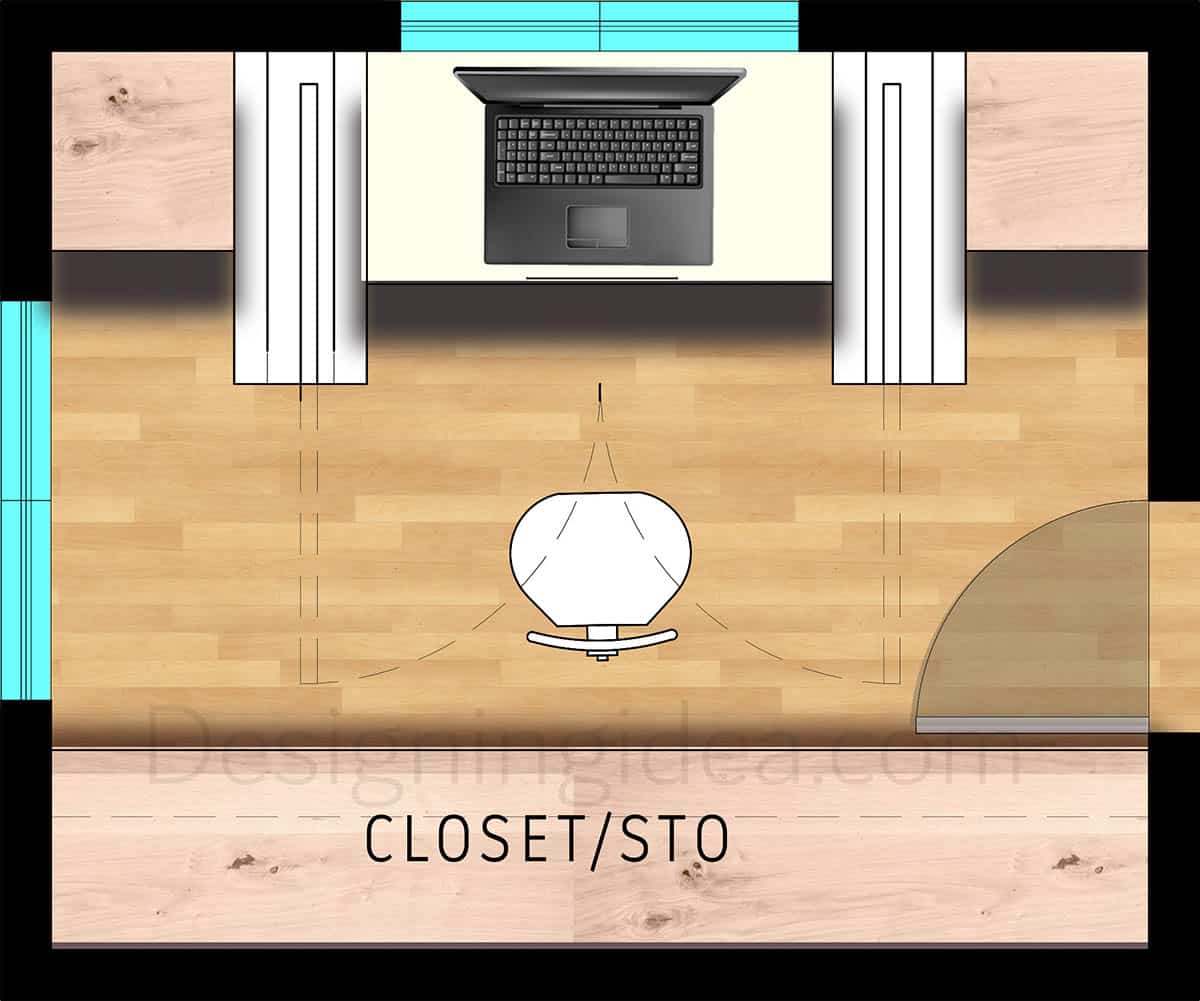
First, build a desk into the full width of the closet to create a tucked-away command center. Flank both sides with open and closed storage to keep essentials handy while maintaining accessibility. Don’t forget to install task lighting above the desk – it’ll be dim in there with the doors closed. Next, add some key functionality elements. A sliding or bi-fold door makes it easy to transition between the open workspace setup and a concealed storage closet. Position an ergonomic chair for comfortable access while keeping pathways clear. And zone the storage areas into sections for work materials and personal items.
This innovative layout packs a lot of function into a small footprint by fully utilizing vertical space. Built-in shelving and tiered storage solutions make the most of the full ceiling height. A floating or wall-mounted desk maximizes floor area and sight lines, so the compact workspace still feels open.
Primary advantages of a closet/office plan:
- Space Optimization: The design capitalizes on underutilized vertical closet space, transforming what’s typically dead storage area into a productive workspace.
- Instant Work Concealment: The integrated door system enables a transition between a professional workspace and a tidy living area.
- Dual-Purpose Storage: The combination of work-related storage and traditional closet functionality ensures maximum organizational efficiency.
Office Bedroom Window Nook Layout
A window nook office layout harnesses natural light and strategic zoning to create a harmonious blend of workspace and living area.
Pairing a bedroom with a home office is all about strategy – this means finding ways to create a functional workspace while still preserving that cozy space for a good night’s sleep. This window nook design pulls it off flawlessly. To pull this off, smart placement is key. Tucking the desk right up next to the window takes full advantage of all that natural light streaming in. It defines a clear workspace zone that feels separate from the sleeping area, so you can focus on work during the day, then relax into that comfy bed at night without visual reminders of unfinished tasks nagging at you.
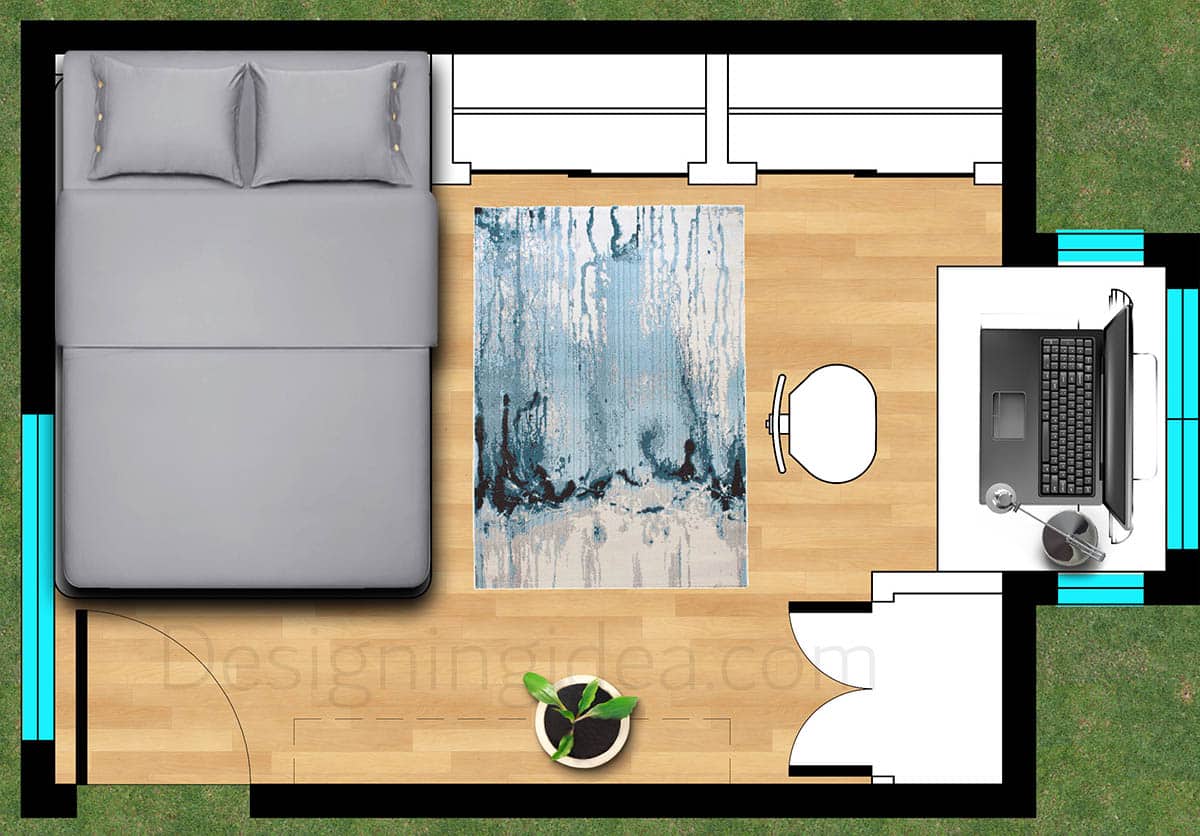
The bed’s centrally anchored position maintains the room’s primary purpose. Soft touches like the area rug and plants transition smoothly from office to oasis, while open floor space keeps the vibe calm and airy. Circulation flows smoothly around both areas. It’s a master class in achieving multi-functionality without sacrificing comfort or style. This window nook layout blends work and rest spaces beautifully by being intentional with sight lines, furniture positioning and decor.
Advantages of an office in a bedroom window nook:
- Natural Light Maximization: By positioning the workspace for optimal natural lighting from the window, one can reduce eye strain and energy costs while creating an uplifting environment.
- Zone Distinction: The intentional desk positioning in the window nook creates a boundary between work and rest spaces.
- Space-Efficient Flow: An underused window nook area maintains clear traffic patterns and maximizes usable floor space.
Folding Murphy Desk Design
This Murphy desk layout masterfully balances workspace functionality and spatial flexibility by incorporating dual fold-away desks and convertible floor space.
I love the clever layout of this compact home office! It’s designed to transform based on your needs with two fold-up Murphy desks installed along the back wall. When you need a dedicated workspace, simply pull down the desks, which feature built-in lighting and enough room for laptops. Add the swivel chairs for comfortable seating and you have an instant dual workstation – perfect for getting projects done solo or collaborating with a colleague.
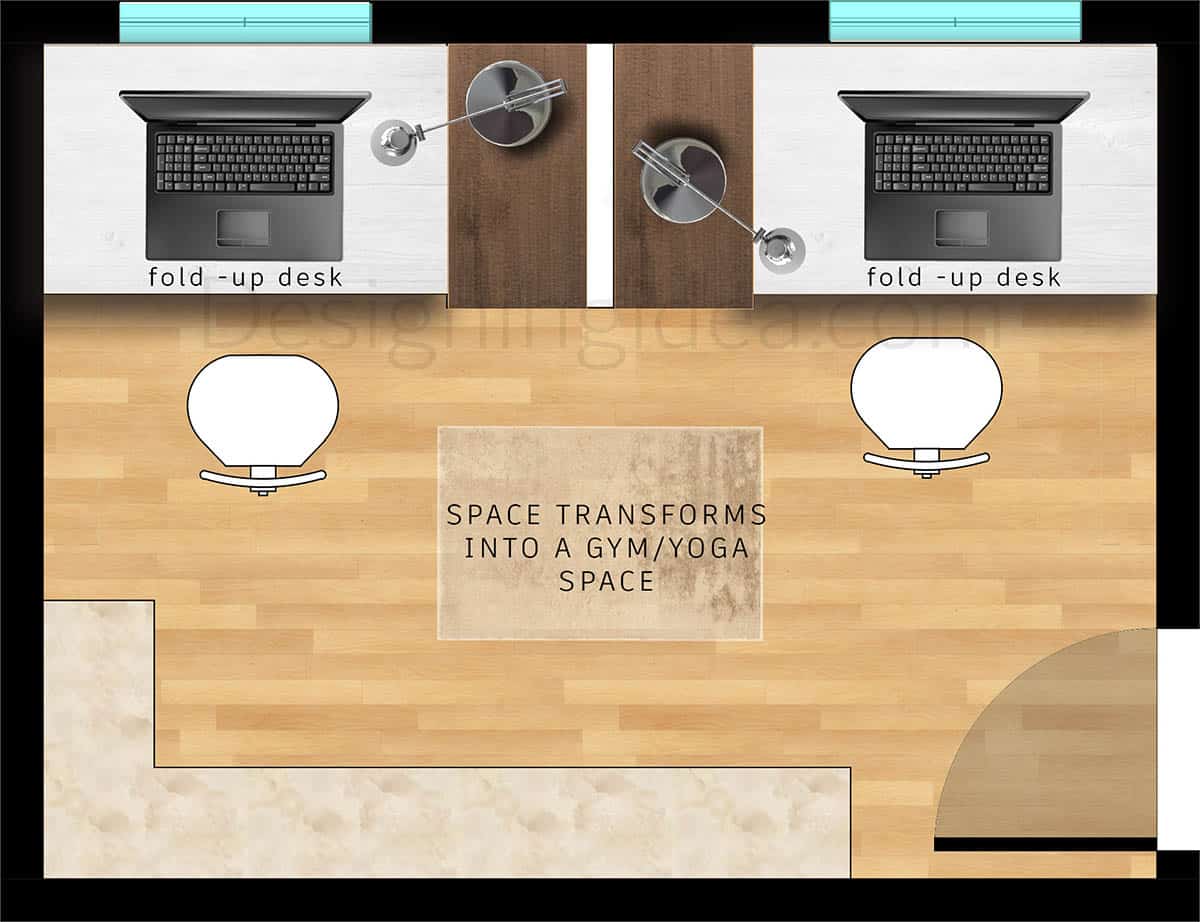
But these desks also fold right back up and out of the way when you’re done with work. This opens up the soft rug space in the center, instantly converting the room into a yoga studio or gym. Between the versatility of the fold-up desks and open floor plan, this layout truly balances productivity and wellness within a single, multi-functional space.
I also love the attention to detail – like the focused task lighting on each desk for reducing eye strain, the open pathways that prevent clutter, and the dual entry/exit points for easy access. This ensures that the room remains practical even as you change activities. It’s a clever way to maximize every inch in a compact home without feeling cramped or crowded. With both fixed and flexible furniture options, this layout accommodates your changing needs throughout the day. It’s ideal for apartments, shared homes, or anywhere that requires efficient use of space.
Why choose a folding murphy desk plan:
- Space Transformation: The fold-away desk system enables instant conversion between three distinct room functionalities (workspace, exercise area, and open floor plan.)
- Dual Workstation Ability: The parallel Murphy desk configuration supports both collaborative and independent work areas.
- Wellness Integration: Floor plan allows for physical activities when desks are stowed, to promote both mental and physical wellbeing within a single room footprint.
Office With Dual-Purpose Furniture Layout
Serve multiple living and work functions by using dual-purpose furniture integration, featuring retractable storage, convertible dining, and activity zones that transform effortlessly.
This smart compact office plan masterfully integrates work and living spaces through innovative convertible furniture. Strategic zoning creates a professional workspace in the corner, with a desk maximizing vertical storage space. The central area features a multi-purpose marble countertop kitchenette, providing sophisticated practicality without interfering with other zones.
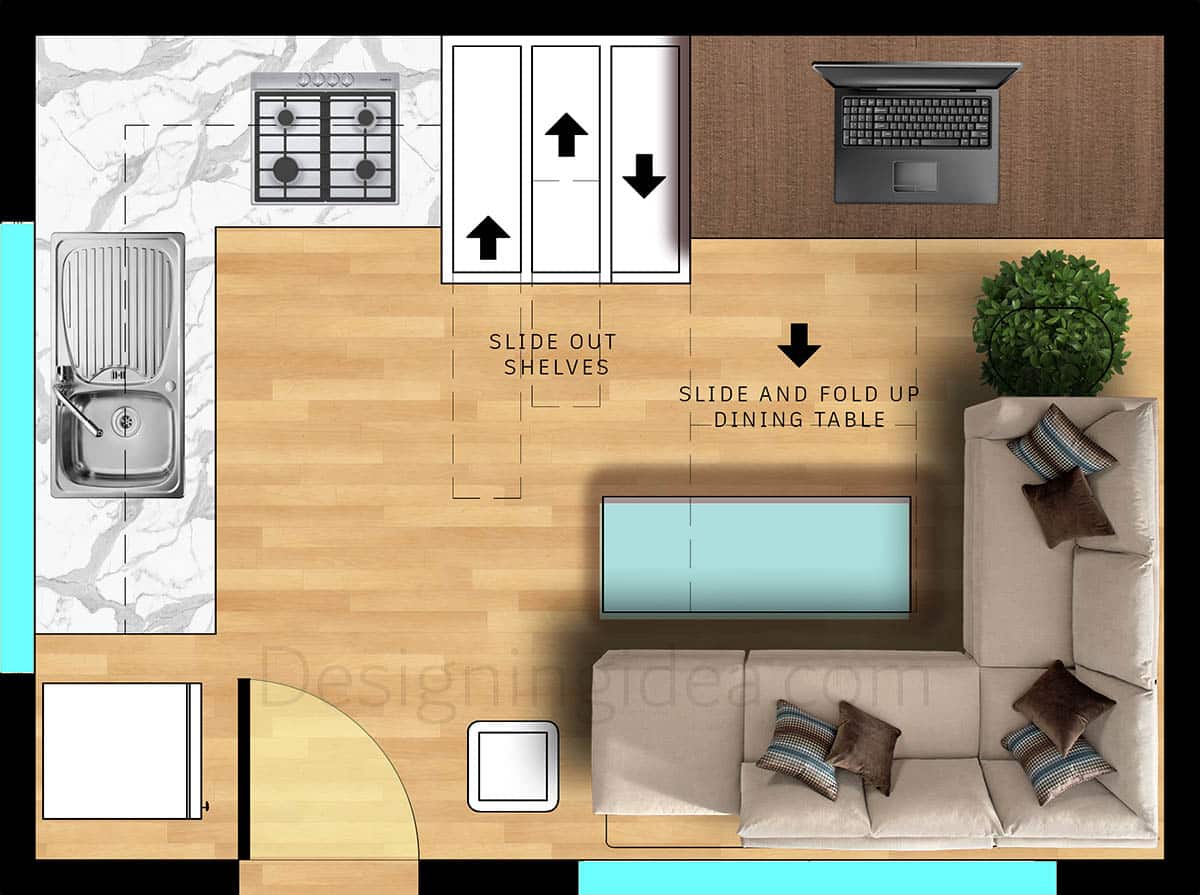
The most transformative element is the L-shaped seating and dining surface which slides and folds to instantly convert the space from a relaxed lounge area into a dining setting. This flexible furnishings approach enables seamless transitions between working, cooking, eating and relaxing within the compact footprint.
Thoughtful positioning allows distinct activity zones while maintaining open circulation paths to prevent a cramped feeling. By implementing space-saving retractable storage, multi-functional furniture and clearly defined flexible areas, this layout revolutionizes efficiency in modern micro-living. The interplay between form and function results in an adaptable environment optimized for diverse daily uses.
Top benefits of using dual-purpose furniture:
- Adaptive Space Management: Retractable components like (sliding shelves, and fold-away dining surface) create instant transformations between workspace and living configurations.
- Multi-Zone Functionality: The design establishes distinct activity zones (professional workspace, dining area, lounge space) that can operate independently or merge together.
- Storage Integration: The slide-out storage system combined with multi-functional furniture pieces (like the L-shaped sofa and convertible dining surface) maximizes both vertical and horizontal space.
Floating Furniture Plan
A floating furniture design shows how a smart corner desk placement and floating furniture can blend a workspace with family living without sacrificing either purpose.
This open and airy room layout artfully blends work and leisure spaces. A sleek workstation is tucked into the lower left corner, featuring a desk and task lighting that provide privacy for distraction-free work sessions. Despite its functional separation, the workspace feels connected to the rest of the room through the spacious, floating furniture arrangement.
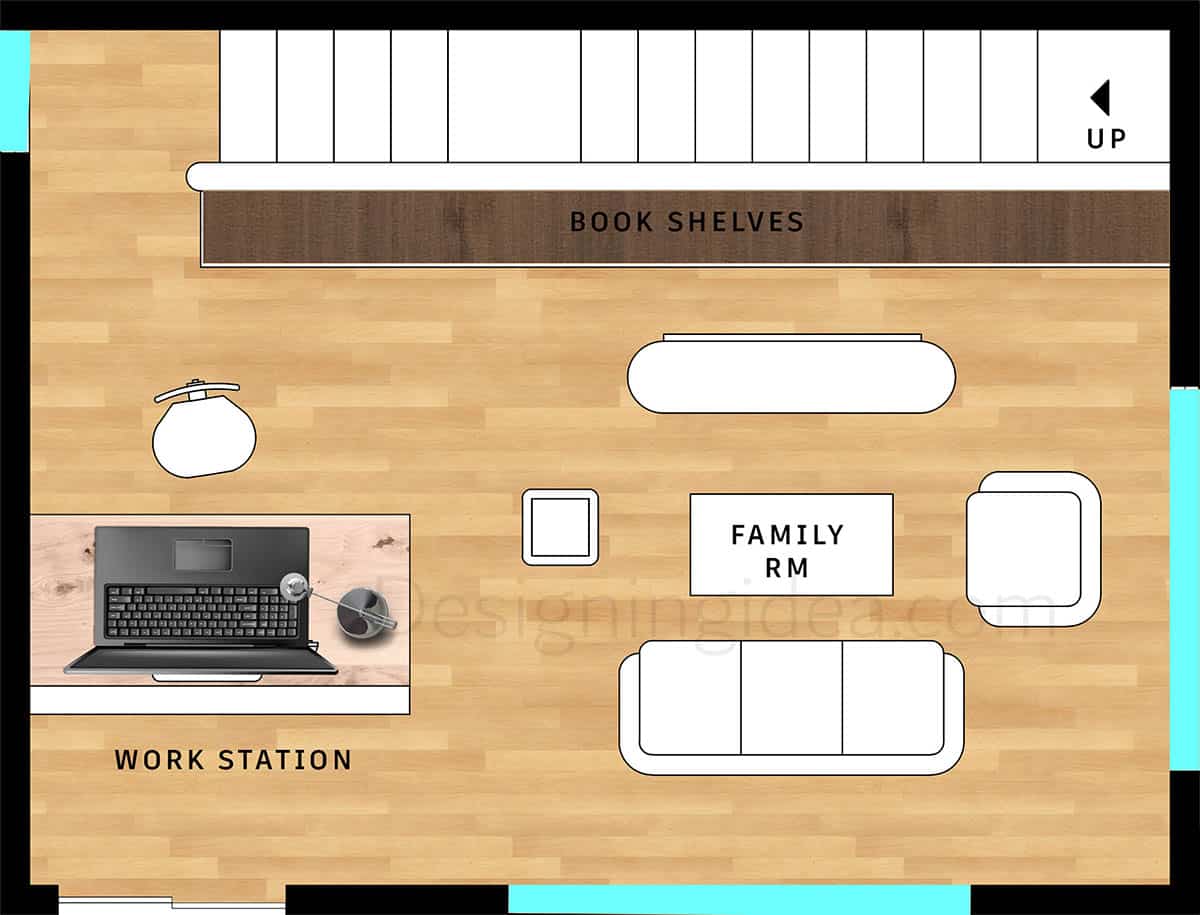
At the heart of the layout, a sofa, armchair, and ottoman encircle a central coffee table to create an inviting family room area. Built-in bookshelves run the length of the far wall, offering abundant storage while visually expanding the aesthetic appeal of the space. The positioning of these key furniture elements helps carve out functional zones without compromising the room’s sweeping sense of openness.
A staircase along the right wall grants access to another level, making this a prized communal area for multi-story homes. Plentiful natural light floods the room thanks to an absence of bulky furnishings along the exterior walls. This further elevates the airy, free-flowing design.
Key advantages of using floating furniture:
- Enhanced Traffic Flow: Placing furniture away from walls creates natural pathways around your workspace.
- Better Space Definition: Floating furniture creates distinct work and living areas without using walls or dividers.
- Increased Flexibility: A floating layout lets you easily reconfigure your space for different needs.
Under Stairs Office Floor Plan
This ingenious layout maximizes space by transforming the under-stair area into a dedicated home office while seamlessly integrating with a comfortable living area.
Tucked beneath a stylish staircase lies a compact yet highly functional home office – an ingenious way to transform dead space into a practical work zone. Strategically positioned to allow privacy without disrupting the flow of the home, an ergonomic desk and chair provide just enough space for focused work. The stair framing adds an architectural flair while neatly integrating the office area.
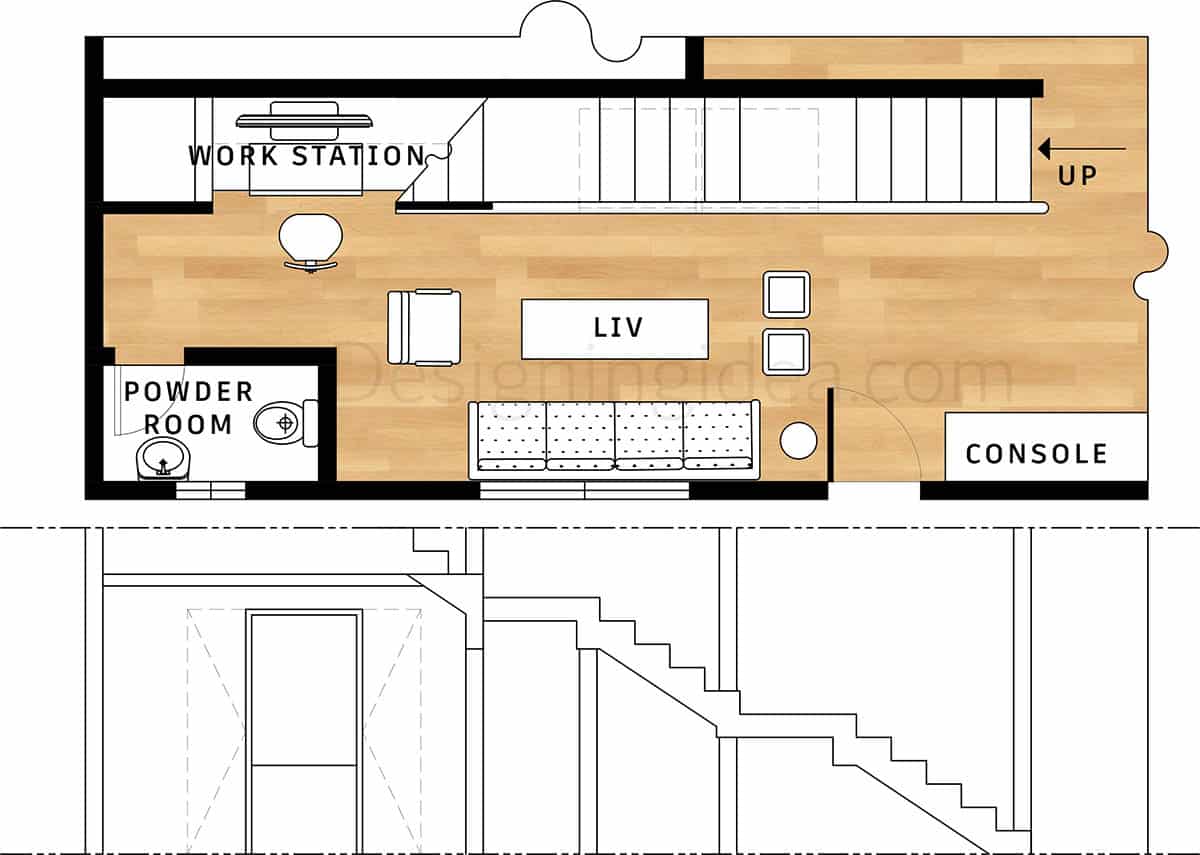
Though small in footprint, smart design choices make this under-stair nook a standout feature. The proximity to storage and shelving enhances utility, while a streamlined layout prevents it from imposing on surrounding rooms. Clever task lighting amps up functionality for remote work or creative projects. Despite its discreet positioning, the office still enjoys a connection to living spaces for moments of multi-tasking or transition.
This efficient use of space proves even the most awkward corners can evolve into specialized workstations when envisioned thoughtfully. For those lacking a dedicated home office, this stair-hugging workspace demonstrates how just the essentials, when arranged intentionally, can manifest productivity. The compact dimensions simply mean each component plays a crucial role – from the stepped ceiling adding depth to the intentional placement granting privacy
Top benefits of an under stairs office setup:
- Space Optimization: Transforms typically unused under-stair space into a productive work area.
- Creates A Natural Work-Life Boundary: Provides a defined workspace with separation between work and living zones.
- Design Integration: Seamlessly achieves multi-functional living without visual clutter.
Foldable Furniture Design
This clever home office design truly makes the most of limited space. An L-shaped couch provides a cozy lounge area in the back corner, accented by a petite coffee table with decorations that add warmth. Across from it sits a compact, foldable desk equipped with a swivel chair, creating a flexible workstation that can disappear when not needed.

Strategically placed in the center are two foldable ottomans, readily serving as extra seating or even footrests after a long day. All furniture is carefully chosen – lightweight yet durable, with multi-functional capabilities. The ottomans flatten for storage, the desk folds up, and the couch maintains openness. Even the shelving unit along the far wall is deliberately streamlined, organized to stash office essentials while retaining a clean appearance.
With space at a premium, this layout focuses on seamless flow between zones. The strategic use of foldable furnishings allows the room to shapeshift as needs fluctuate, easily morphing from work area to relaxation spot.
Tips for using folding furniture:
- Use Multi-functional Furniture: Choose furnishings that serves multiple purposes, such as a foldable desk with storage or ottomans that double as storage bins.
- Use Light-weight Furniture: By using lighter materials you can more easily move the items around the room for different configurations.
- Wall-Mounted Foldables: Wall-mounted folding desks, tables and chairs can be space-savers and stored away when not in use.
Bedroom Office With Small Desk
A successful bedroom-office layout hinges on intelligent zone separation through strategic furniture placement and foldable solutions, allowing the space to transition seamlessly between work and rest.
A home office space in the bedroom is the natural choice for those with smaller homes or apartments. Positioning a foldable desk tucked neatly into the far corner by the window utilizes the natural light streaming in while opening up valuable floorspace when not in use. An adjustable ergonomic chair ensures you can work comfortably for hours without strain.
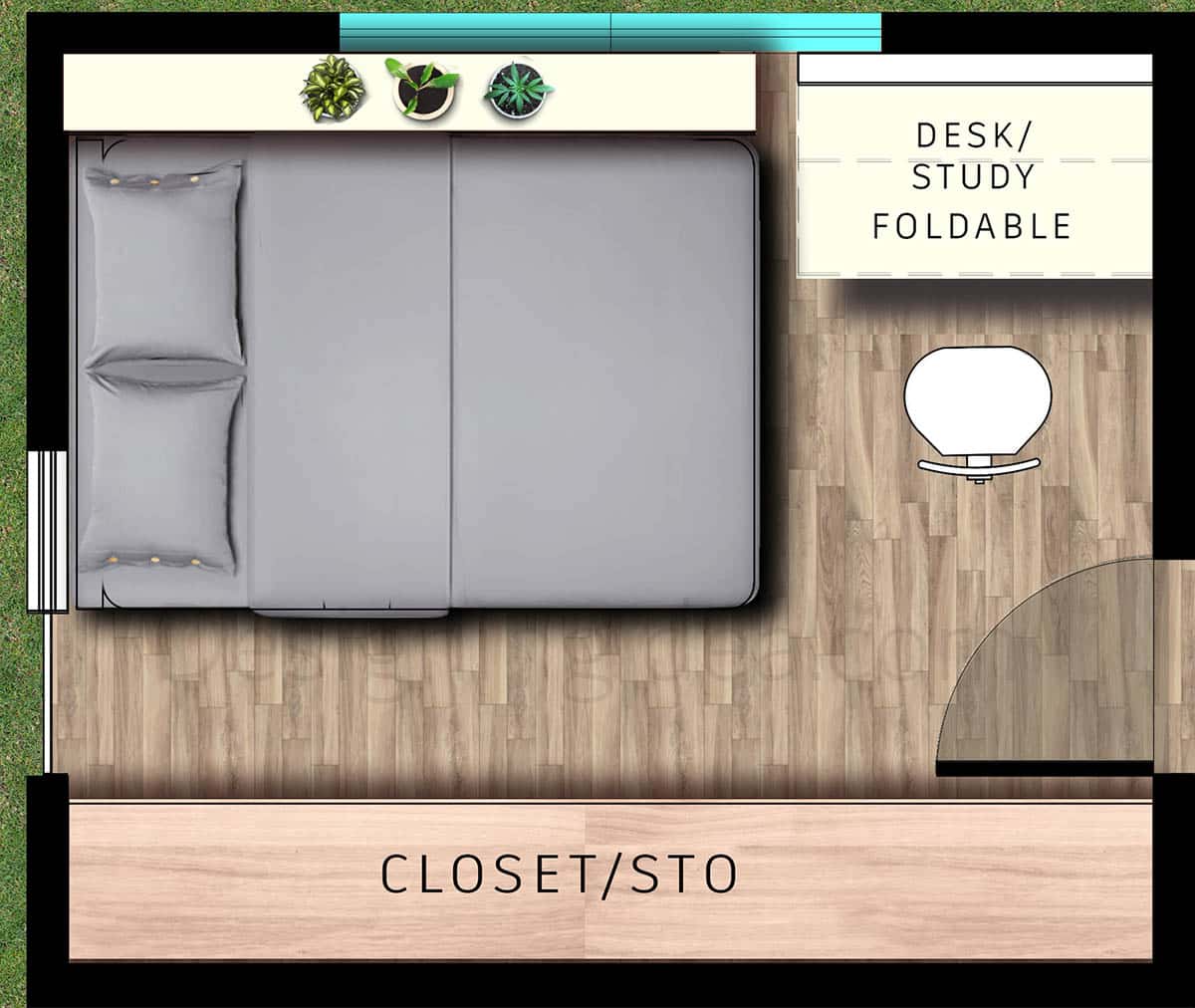
Now, onto crafting that peaceful sleep zone. Carefully placing the bed along the opposite wall divides the room naturally, defining each area without totally separating them. Floating shelves overhead continue the division while adding storage space for books, plants and other bedside essentials. Make sure to leave enough room surrounding the bed for smooth circulation. Of course, proper storage is essential for keeping this multifunctional space neat and organized. Lining an entire wall with closet systems and vertical shelving contain clothes, office supplies and other clutter out of sight while the room transforms between work and rest modes.
The end result skillfully blends work and sleep spaces while embodying three core design principles: Space efficiency through foldable furniture, clear zone separation between the bed and desk, and hidden integrated storage to maintain visual serenity.
Additional tips for a bedroom/office layout:
- Create Strategic Zones: Position the bed and desk on opposite sides of the room and use rugs or furniture placement to create natural boundaries.
- Use Transformable Elements: Install wall-mounted, foldable desk solutions and dual-purpose furniture like storage ottomans. Incorporate movable room dividers or screens for flexibility
- Visual Cohesion: Implement matching storage solutions across both zones with a unified color palette for all furniture pieces. Create intentional lighting plans for both work and rest.
Take a look at these 10×10 office layouts for more space saving designs for a variety of work styles.

